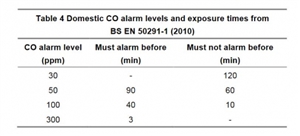Recently found that the Carbon Monoxide Alarm located in the cellar of our village hall, where the CH gas boiler is located, had failed.
Contacted both the servicing company for the boiler and the company which services the fire alarm and fire extinguishers and both said NO, just buy one from Screwfix etc and fit it yourself.
Since both would likely have been doing their main job at the same time, why the “we don't want the job” attitude?
Originally I had thought of just buying one etc, but thought about the liability aspect since I am not insured. Certainly at sea testing and repairing fire and smoke alarms was within my remit, but was there as an employee, not a contractor. Are these two companies thinking on similar lines? (Or as my wife just said, they don't want to go down into the cellar…)
It would be simple enough to purchase a new one and fit it in the same place as the failed one.
Good idea or not?
Clive


